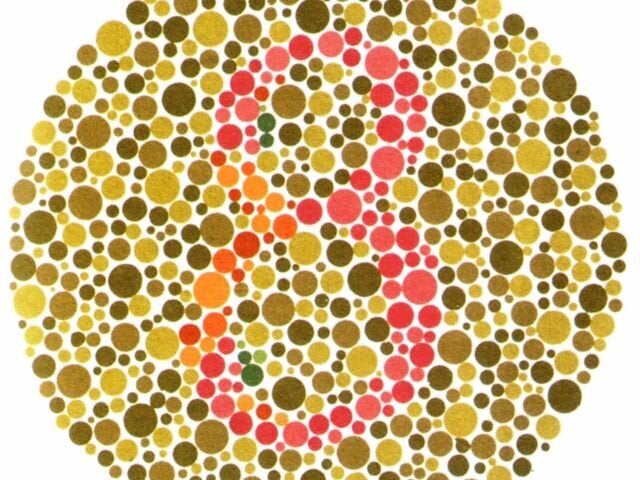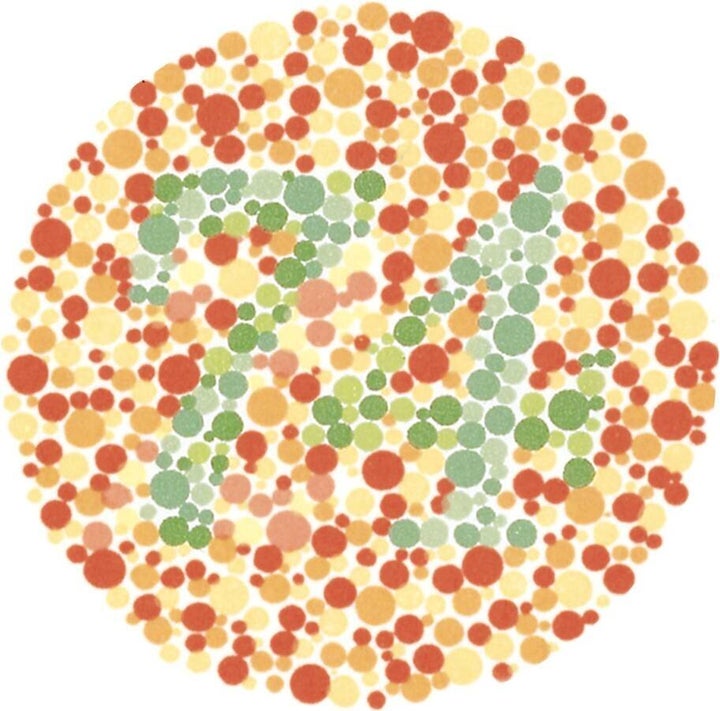
If you believe your favourite t-shirt is brown yet others insist it is actually green, or if you're tearing your hair out searching for your missing 'purple' folder only for your family to find it and tell you it is, in fact, a blue folder - chances are you are colour blind.
Colour blindness is an affliction that affects around eight per cent of males and just 0.5 per cent of females. Most people who are colour blind are not entirely colour blind because they can still see colours; but they see only a narrow range of colours.
It's more accurate to say they have a colour deficiency or colour weakness, rather than a blindness. Vanessa Honson, Optometrist from UNSW Optometry Clinic told The Huffington Post Australia the most common form of colour blindness is an inherited condition affecting the X chromosome, and this is present from birth.
"This means that males (with the XY chromosome) with only one X chromosome will show the condition, and females (having XX chromosomes) mostly will not show the condition but will be a carrier and may pass it on to her children. Females only have a colour deficiency if they inherit one affected X chromosome from their mother and their father," Honson said.
Congenital colour deficiencies can be classified as mainly protan or deutan, she said.
Protan deficiencies refer to either the loss of 'red' pigment in photoreceptors or a modified red pigment. Similarly, deutan refers to the loss or having a modified 'green' pigment.
"People with these colour deficiencies are not 'blind' to red or green colours, but rather all colours look different because the 'red' or 'green' input is less and therefore the range of colours is much smaller," Honson said.
There's a simple test you can take to see if you have any colour deficiencies. Optometrists usually conduct a book test, called the Ishihara Test, with plates consisting of coloured figures made up of many spots. These figures act like invisible ink to people with colour problems and it is hidden amongst the background spots.
If you can see the number in these circles, you are not likely to be colour deficient.

Some colour deficiencies can also be acquired from eye diseases, general systemic diseases, toxicity from some drugs, or in general from the crystalline lens in the eye as we age.
If you discover your child is colour deficient, it's important to be aware that there are some careers they wouldn't be able to pursue. Honson said top of the list of careers to avoid are those in aviation.
"The aviation industry requires good colour vision, such as being a pilot or air traffic controller; being in the defence forces; maritime industry; railway workers, particularly train drivers and signal operators; police (both state and federal) and electricians," Honson said.
"I'd encourage parents to give their kids more cues such as telling them the colours of objects (rather than asking them for a colour) when they are younger. Let their teachers know, so strategies and a better understanding can be in place in the classroom. One example of this can be photocopying anything that is hard for that child to read e.g. green print on white can look very faint. Label colouring pencils if necessary, and still encouraging drawing and creativity; they still see colours."

While there is no cure for colour blindness, Honson said it doesn't mean that some 'tinted' lenses cannot help, as certain tints may enhance contrast between colours that can otherwise look the same.
So an orange-red ball on a green lawn that does not stand out to someone with a colour deficiency, will suddenly look brighter if seen through a 'reddish' tinted lens.
"So, the tinted lenses can reduce glare and also make a scene look more vivid in some cases, but no tall, and lighting variations will also affect the effect. Tinted lenses in low light conditions is not recommended," Honson said.
Your local optometrist is a good starting place for screening eye problems, including checking for colour vision loss, and this can be carried out with all children before they go to school.